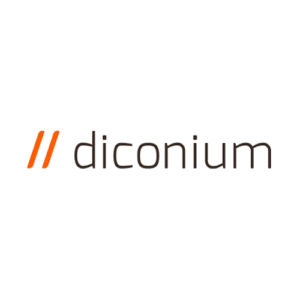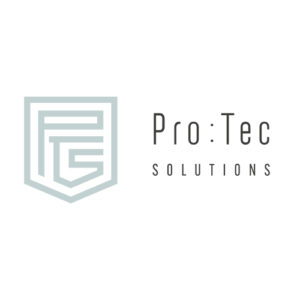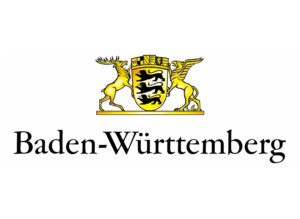VON DER VISION.
ZUR REALITÄT.
Ihre Digitalisierung- Effizient, sicher und innovativ
EFFIZIENZSTEIGERUNG
WETTBEWERBSFÄHIG
RISIKOMINIMIERUNG
KUNDENORIENTIERUNG


































Agile
BusinesS
Wenn Agilität mehr als eine Worthülse ist
Für eine erfolgreiche agile Transformation, die nicht in den unendlichen Weiten verschwindet, sind Know-how und ein datengestütztes Transformationsdesign entscheidend. Jeder von uns initiierte, agile Prozess beginnt mit einer Bestandsaufnahme Ihres Unternehmens. Denn nur wenn die richtigen Stellschrauben identifiziert werden, können wir den Startpunkt des agilen Prozesses bestimmen und gemeinsam verstehen, was Agilität in Ihrem speziellen Fall bedeutet. Denn keine Erklärung ist besser als die, die auf Ihr Anliegen zugeschnitten ist. Oft stecken Herausforderungen beispielsweise in projektinterner Kommunikation, der Produktivität oder der Unzufriedenheit des Teams. Diese Indikatoren werten wir aus und entwickeln von dort aus mit individuellen Methoden ein agiles Arbeitsumfeld innerhalb Ihres Unternehmens.
Melden Sie sich gern bei uns für ein unverbindliches Gespräch, in dem wir bereits den ersten Schritt für eine auf Sie und Ihr Unternehmen angepasste Planung gehen.
AGILE BEURTEILUNG: Identifizieren Sie Verbesserungsmöglichkeiten mit unserem präzisen Agile Assessment und steigern somit Ihre Effizienz, Produktivität und Kundenzufriedenheit.
BUSINESS AGILITÄT: Profitieren Sie durch eine erhöhte Anpassungsfähigkeit an Veränderungen, schnellere Innovationen und bessere Erfüllung von Kundenerwartungen.
AGILE TRANSFORMATION: Steigern Sie ihre Effizienz in der Produktentwicklung mit einer optimierten, kundenorientierten Arbeitsweise, die zu einer schnelleren Markteinführung und verbesserten Geschäftsergebnissen führt.
★ IHRE VORTEILE:
– Effizienzsteigerung
– Zeitersparnis
– Flexibilität
– Innovationsförderung
– Risikominimierung

Marco Petersohn +49 173 4400 566 m.petersohn@rethink.de
ENTERPRISE ARCHITEKTUR
Wir bringen struktur und hilfreiche prozesse in ihr unternehmen
Maximieren Sie Ihr digitales Potenzial mit moderner Enterprise Architektur. Eine auf Ihr Unternehmen zugeschnittene Architektur kann Ihre Geschäftsprozesse, IT-Infrastruktur und Anwendungslandschaft optimieren. Mit unseren maßgeschneiderten Lösungen befähigen wir Sie fundierte Entscheidungen zu treffen und das Maximum aus ihren digitalen Investitionen herauszuholen. Unsere Leistungen umfassen:
Unserer Dienstleistung umfassen:
IT & DIGITALSTRATEGIE
ORGANISATIONSENTWICKLUNG
PROZESSANALYSE & OPTIMIERUNG
UNTERNEHMENSARCHITEKTIR
★ IHRE VORTEILE:
– Ganzheitlicher Ansatz
– Effizienzsteigerung
– Bessere Entscheidungsfindung
-Kundenorientierung
Vladimir afonichev
+49 174 6865 510
v.afonichev@rethink.de

Secure Business
Cybersicherheit als Immunsystem Ihres Unternehmens
Cyberangriffe sind vielseitige und reale Bedrohungen und nehmen stark zu. So ist mittlerweile mehr als jedes zehnte Unternehmen von Cyberangriffen und IT-Sicherheitsvorfällen betroffen. Bauen Sie sich mit unserer Sicherheitsberatung und SOC-as-a-Service eine starke Abwehr auf.
Unserer Dienstleistung umfassen:
RISIKOBEWERTUNG UND GOVERNANCE
MANAGED SERVICES.
CYBER RESILIENZ
SECURITY CONSULTINGS UND TRAININGS
★ IHRE VORTEILE:
– Sicherheitsüberwachung rund um die Uhr
– Kostengünstig
– Compliance-Sicherung
– Kostenersparnis und Kapitalsicherung
CLOUD
DEVELOPMENT
Individuelle Lösungen für Sie
Wir glauben an die transformative Kraft der Cloud für die digitale Neugestaltung. Unsere Expertise in Architektur, Konzeption, Umsetzung und Betrieb komplexer Softwaresysteme fließt in Transformationsvorhaben ein. Als zertifizierter AWS-Partner bieten wir höchste Sicherheit, Flexibilität, Resilienz und Nachhaltigkeit im Cloud-First-Ansatz. Unsere Cloud-Beratungsdienste nutzen Amazon Web Services (AWS) für ein unvergleichliches Cloud-Erlebnis.
Unser Fokus liegt auf maßgeschneiderten, nutzenorientierten Cloud-Lösungen. Mit einem umfassenden Portfolio agieren wir als ganzheitlicher Partner. Wir definieren gemeinsam mit Ihnen Ihren Bedarf und entwickeln das richtige Konzept. Durch unser End-to-End-Vorgehen setzen wir wertschöpfende Lösungen um.
Unsere Dienstleistungen umfassen:
BESCHLEUNIGTE ORGANISATION
OPTIMIERTE INFRASTRUKTUR
ENTLASTUNG DER IT-INFRASTRUKTUR
ANPASSUNGSFÄHIGKEITEN AN MARKTVERÄNDERUNGEN
ZUKUNFTSORIENTIERUNG
★ IHRE VORTEILE:
– Messbare Cloudvorteile
– Umsatzgenerierung
– Erhöhung der Margen
– Transparenz
MARCO PETERSOHN
+49 173 4400 566
M.PETERSOHN@RETHINK.DE
DEV
OPS
Die Brücke zwischen ENTWICKLUNG UND BETRIEB
DevOps bietet mittelständischen Unternehmen zahlreiche Vorteile zur Steigerung von Effizienz und Wettbewerbsfähigkeit durch die Implementierung von Automatisierung und Monitoring. Die Zusammenarbeit mit DevOps-Experten ermöglicht es, eine maßgeschneiderte Technologiebasis zu schaffen und die digitale Transformation zu beschleunigen.
★ IHRE VORTEILE:
– Beschleunigte Bereitstellung
– Optimierte Ressourcennutzung
– Verbesserte Kundenbindung
Technology Services
FÜR MAXIMALEN MEHRWERT IN IHRER SOFTWARELANDSCHAFT
Bei der Modernisierung eines Softwareökosystems ist Fingerspitzengefühl gefragt. Die Optimierung muss den laufenden Betrieb operabel halten, alle Beteiligten abholen und Prozesse in der Wertschöpfungskette nach vorn bringen. Mit einem umfangreichen Blick in alle Gewerke der IT ist es uns möglich, ein definiertes Anforderungspaket mit Maßnahmen zu schnüren, die genau zu Ihrem Unternehmen passen. Egal ob dann neue Software oder ein Frühjahrsputz auf den bisher verwendeten Plattformen gefragt ist – wir kümmern uns sowohl um die Entwicklung als auch den Betrieb und die Überwachung. Dabei haben wir immer Ihre individuellen Anforderungen im Auge. Zum einen ermöglicht uns das, genau die richtigen Maßnahmen zu ergreifen, zum anderen messen und optimieren wir so im laufenden Prozess den Erfolg.
Vladimir afonichev
+49 174 6865 510
v.afonichev@rethink.de

Business Services
Die Notwendigkeiten als Notwendigkeit
Eigentlich stehen die Sterne gut. Die Teams sind motiviert, alle Beteiligten engagiert und die erarbeiteten Ergebnisse zahlreich. Wenn es trotz all der positiven Vorzeichen in einem Projekt dann doch nicht funktioniert, ist meist ein mangelhaftes Anforderungsmanagement in den einzelnen Gewerken die lose Schraube des Getriebes. Unsere Business Services zielen darauf ab, mit Struktur und klaren Methoden Ihre Prozesse sauber und verständlich zu gestalten. Das beginnt bei Anforderungsprofilen die einen Mehraufwand vermeiden und erstreckt sich bis zu der digitalisierten Steuerung von Projektteams – intern sowie extern. Zeitplanung, Budgetierung, Struktur und Organisation sind so in trockenen Tüchern und gestalten ein Umfeld, in dem spannende Projekte jeglicher Komplexität erfolgreich abgeschlossen werden können.
Marco Petersohn +49 173 4400 566 m.petersohn@rethink.de
Alle Antennen auf Empfang – Wissen zum lesen und herunterladen
BLOG
Digitale Transformation hört man heutzutage überall- aber was bedeutet das im Detail? Damit Sie und Ihr Unternehmen gut aufgestellt sind, verfassen wir praxisnahe und informative Beiträge auf unserem Blog.
Whitepaper& dOWNLOADS
Wissen ist Macht – und unsere Expertise teilen wir nicht nur im direkten Dialog, sondern auch als Whitepaper. Diese haben wir zu verschiedenen Themen für Sie aufbereitet, um Ihre digitale Transformation auf das nächste Level zu bringen. Nutzen Sie unsere Insights zu Ihrem Vorteil und machen Sie Ihr Business zukunftssicher.


WER IST
re:think?

Digitale Transformation. Businesstransformation. Agilität. Liest man überall, denn es scheint jede:n zu betreffen. Das Verständnis für die Notwendigkeiten und Möglichkeiten der Transformation des eigenen Unternehmens wird bei den von Buzzwords gespickten Ausführungen aber oft nicht klar. Wir haben einen anderen Anspruch – wir übernehmen nicht nur die Rolle der Strateg:innen und Umsetzer:innen, sondern Erklärer:innen und Partner:innen.
Hi, wir sind die re:think Innovations GmbH. Wir sind ein agiles Team mit rund 50 Mitarbeiter:innen, die in mehreren Teams interdisziplinär in allen Bereichen der digitalen Transformation arbeiten. Dabei fußt unsere Art der Zusammenarbeit auf einem transparenten Austausch mit unseren Kund:innen, denn, wir möchten Sie und Ihr Unternehmen darin unterstützen, digitaler und nachhaltiger zu arbeiten.
Durch eine ausführliche Analyse des Ist-Zustandes eines Projektes bringen wir zu Beginn Klarheit in alle Ebenen des Prozesses. Wir zeigen Möglichkeiten und Pfade auf, die eine ressourcenschonende und umsetzbare Transformation ermöglichen. Für mehr Produktivität, bessere Risikotransparenz, individuelle Softwarelösungen und Digitalisierung von Prozessen. Wir erschlagen Sie nicht mit Buzzwords – wir befähigen Sie und Ihr Business mit unserer Arbeit, zukunftssicherer nach vorn zu schauen. Und falls Sie schon ganz genau wissen, was Sie brauchen und wollen: Sehr schön, wir tauchen auch gern in technischen Nerd-Talk ab, um gemeinsame Ziele zu definieren und Maßnahmen zu beschließen.
Wir freuen uns auf den Kontakt zu Ihnen und können es kaum erwarten, anzupacken!

Landeerlaubnis erteilt
Wir freuen uns über IHRe Bewerbung
Schauen Sie sich unsere offenen Stellen an und finden Sie bei uns Themen, die auch Sie weiterentwickeln, treiben und vordenken wollen. Wir freuen uns über ambitionierte, neugierige und technikbegeisterte Menschen, die mit uns gemeinsame Sache machen wollen!

Luftschleusen auf
Treten sie mit uns in Kontakt
+49 174 686 5510
info@rethink.de

Shootout Gewinnspiel der basketball löwen braunschweig
Sponsored by re:think
Das Gewinnspiel findet bei jedem Heimspiel der Basketball Löwen Braunschweig statt. Zwei Teilnehmer:innen werden inklusive einer Begleitperson von uns eingeladen und erhalten die Tickets kostenlos.
In der Pause nach dem ersten Viertel versuchen die beiden Spieler:innen innerhalb von 30 Sekunden von verschiedenen Positionen aus so viele Körbe wie möglich zu werfen. Je nach Position gibt es unterschiedlich viele Punkte.
Die Tagessieger:innen nehmen einen 50 Euro Netflix-Gutschein mit nach Hause. Zusätzlich darf sich der/die Sieger:in der Saison über ein iPad Pro freuen.
Jetzt anmelden und unsere attraktiven Preise abräumen!
Let's Roll!


Um eine Chance zu haben, an dem Spiel teilzunehmen, müssen Sie Ihre Daten hinterlegen und unserem Instagram Account folgen. Wir ziehen dann die Gewinner:innen per Losverfahren und Informieren Sie über unseren Instagram Live-Stream und per E-Mal über die Vergabe der Freitickets und die Teilnahme am Pausengame. Die Teilnahmebedingungen sowie Datenschutzrechtlichen Bedingungen zum Shootout entnehmt ihr -> HIER.
Wir gehen ein paar Tage vor Spielbeginn auf unserem Instagram Account Live und ziehen den/die Gewinner:in.
Achten Sie zusätzlich auf Ihr Postfach, Sie werden auch per E-Mail informiert.




